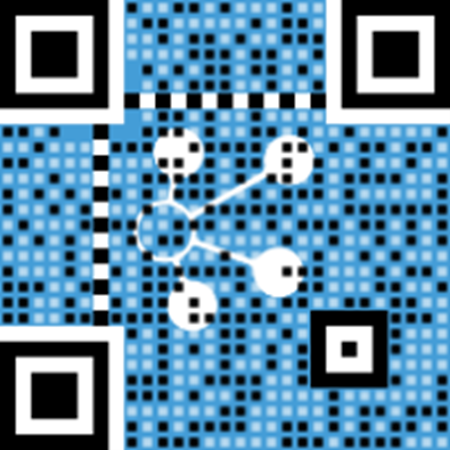The unintended consequence of the modern digital workplace, how it can be controlled and turned into a benefit.
Recently, In the midst of an virtual client meeting, I was struck by a conversation that took place in front of my eyes. A member of the team screen shared a pdf document to support a talking point. It was an internal document carrying the company’s brand. Its content supported the talking point, but that was not the response the pdf solicited. “Where did you get this from?” – “Who created this?” – “Can you send it to me?”
It was striking and illustrates a common business problem as the digital workplace grows; nuggets of knowledge especially expert knowledge containing important information to increase performance and sales that often never get monetized.
How many nuggets of knowledge lie within your business, dormant, overlooked, or hidden from view?
When a company invests in a tangible asset, that asset receives certain treatment: it has a monetary value to it, its a cost that requires a return-on-investment. It is usually depreciated over time, with regular analysis of its productivity. In short, there are ways to assess the assets performance, its value to the business. If a tangible asset were not to perform, the business would soon know about it. If we treat tangible assets this way, why don’t we treat knowledge in the same way? In the modern workplace, employees are handling significant assets all of the time, in the knowledge they bring into their work, IF the right knowledge is available, in the moment of need. A sales executive can only be as effective as the knowledge he or she uses. A field technician is only as productive at delivering superior service, based on the knowledge he or she has access to in the moment of need.
There are some considerable challenges for handling knowledge as a strategic asset, for example:

Digital technologies create a negative unintended consequence: for those of you who worked through the emergence of email understand its negative consequence. The theory was quick communication and saving time. For me in those days, no more standing around feeding papers into a fax machine. Email of course was well received, until the volume of emails skyrocketed, thwarting much of the intended productivity gains, and leading to stress and under-performance for many workers.

There is an abundance of knowledge: the digital workplace is accelerating the creation of knowledge. Different platforms, different forms of knowledge, originating in different functions. Formal and informal knowledge created by and with formal and informal tools. The digital workplace enables faster and more pervasive knowledge creation. Its availability to those who need it most, when they need it, is becoming a new form of bottleneck and the next unintended consequence in the evolution of the digital workplace.

User experience affects knowledge usage: employees want the same digital experience they receive in their everyday behaviors. Think of it: if you want to purchase a kitchen appliance, how many clicks? how much time does it take? to find the right thing? at the right price? purchase and then go about the rest of your day? If it takes more than a few clicks, frustration sets-in, and you “click away”.
This might be ok in a out-of-work context and you might fight your way through it if you are “hot” for the product you want to purchase. 89% of Google searches never go further than the first page of search. If these are common ‘digital behaviors’ we need to recognize that workers carry these behaviors into their workplaces.
Now think about the many employees and how many times do they experience that they simply can not “click away” or stop searching as they need the information and knowledge at critical moments in their work to perform their work? That is why studies show that, depending on the employees profile, they often spend 20% of their daily working time searching for information they need.

Knowledge access affects employee engagement: If accessing knowledge is challenging or complicated, not only is the employee productivity affected, but it also subconsciously alters an employee’s engagement towards their work and towards their employer. Knowledge that is quick and convenient to find increases productivity. A more productive worker is more engaged.
The eco-system of knowledge creation: Returning to tangible assets, one other characteristic is that they often have finite capability. A machine, for example, can only perform a certain function, and has finite capacity. Knowledge on the other hand is by its very nature is open-ended: knowledge availability feeds employee experience and learning, which generates more knowledge in a continuous recurring cycle – but only if knowledge can be quickly and easily made available where the worker needs it, when they need it, in the moment of need.
Summary

Google-like, Amazon.com-like experiences is the digital behavior and expectations that workers now expect; but not limited to the first page search and especially narrowed down to the knowledge THEY NEED. A worker’s time-horizon to persevere to find knowledge is shrinking, the mass of knowledge is creating an added cost to businesses through search time and much knowledge is under-utilized.
Knowledge has a cost to the business. If we could attach a $$$ value to knowledge we would each sit-up and pay attention to working at making it better available and leveraging its value.
Enabling workers to apply their digital behaviors in their lives to their work will accelerate the value of knowledge as a asset, pushing knowledge out from the center in ways that workers find it quickly, when they need it, where they need it, in the moment of need to increase the overall performance of the company they work for.
Mark Tully, Digital Workplace Specialist
Uplevel your knowledge management

Just scan the following QR code with your camera phone or use the following link to find out more.

About the author:
Mark Tully, Digital Workplace Specialist at Pokeshot, has expertise and many years of experience in consulting medium-sized companies in the effective use of modern learning methods to increase the competence and motivation of their employees. His expertise ranges from his successful engagement as a corporate classroom trainer, script and learning media author, to consulting on the use of neuroscience technologies and methods for an optimal hiring, onboarding and development of people.